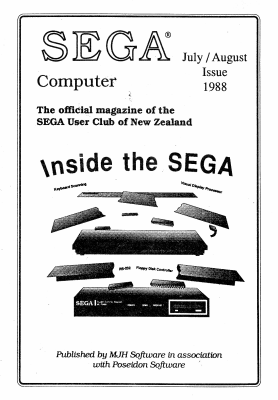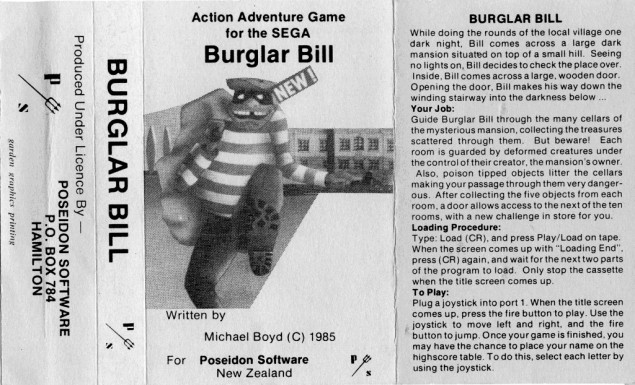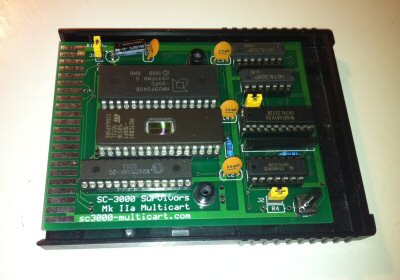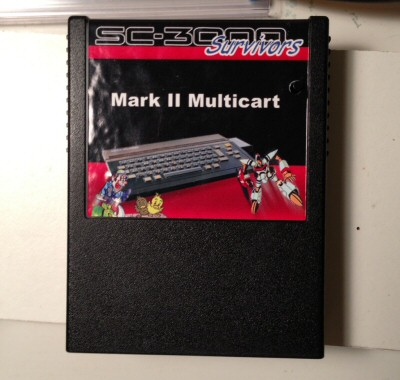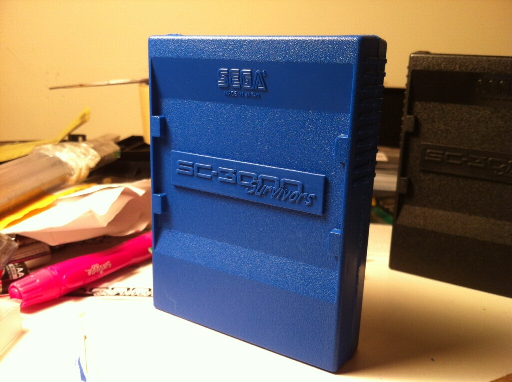Sega Survivors – Nick Hook
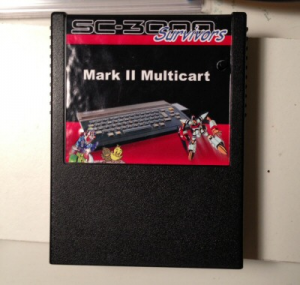
[ Comments are closed for this post ]
What got you started collecting on/around the area of games? / What do you collect?
I have managed to restrict my collecting to the Sega SC-3000 / SC-3000H.
I think most collectors have their own nostalgic reasons for doing what they do, or at least that is how it starts.
In my case, the Sega SC-3000 was my first computer. It was 1984 and I was 9 years when Mum and Dad brought it home for Christmas. I can still remember the excitement of seeing it plugged in and running for the first time on the little 12″ NEC colour TV they bought to go with it, and the thrill of listening to the Star Jacker theme music.
This was the dawn of the home computer in New Zealand and my parents were sold on the promise of a new, brighter future of learning for their children. I spent many happy hours playing games and many more typing in programs from the NZ Sega Computer magazines on the SC-3000’s dodgy rubber keyboard.
I kept all our original SC-3000 gear, and a few years back I hooked up with the Sega SC-3000 Survivors project over at http://sc-3000.com
I was originally just planning to play a couple of my favourite Michael Boyd games in an emulator then box the tapes up in the cupboard and forget about them. But I had a few titles that weren’t in the archive, and some of the tapes were badly degraded – in particular ‘Help’ by Michael Howard. I had to dig into the SC-3000 architecture to figure out how to repair it, and by the time we had a working version of ‘Help’ I was hooked.
What do you find enjoyable about it?
I love digging into the hardware and software architecture. Modern operating systems and computer hardware are incredibly complex, and you are separated from the hardware by multiple layers of APIs. There is something very satisfying about working on a small system where you know how everything in that system works, and why.
And I’ve learned lots of useful new skills along the way, especially through the SC-3000 Multicart Project. I now have a good understanding of building and repairing electronic circuits and PCBs, mold-making / casting of games cart cases, 3D printing, assembler, and CPU architecture. All those boring parts of the computer science lectures I sat through 20 years ago now make sense as modern computer architecture is just an evolution of the same basic underlying principles used to build a 30 year old home computer.
I also like being able to chat with people with a common interest and sharing a few memories. And occasionally something interesting comes up, like helping with the SC-3000 port of AstroDodge. That was lots of fun and it was great to see a new release for the SC-3000 after 25 years.
And my kids give me a *little* bit of respect for my interest too 🙂 The old skool games are way too hard for them, but they think the Sega is kind of cool. Kind of.
Do you have any items that hold a special significance for New Zealand/Australia? Can you tell us about some of them?
I think the Sega SC-3000 holds a special place in New Zealand home computing because of the local community that was built around it. I believe the Australasian market was the largest market outside of Japan.
Unfortunately it was a sales flop for Sega, and they quickly abandoned the home computer market and shifted focus to games consoles. That meant the flow of software from Japan stopped, and local NZ and Australian authors were the only source of new programs. But thankfully there was a good network of local Sega user groups to help people get the most out of their new computers. And first Sega Software Support and then Poseidon Software in Tokoroa kept the software flowing from local NZ and Australian Authors.
The Sega Computer magazines were published in New Zealand, first by Sega Software Support and later by Michael Hadrup. These were a lifeline for anyone with an SC-3000. They contained a range of type-in programs, reviews, advice, and programming lessons. I think that Michael Hadrup in particular did an amazing job with the final year of Sega Computer magazine as he started publishing that whilst in the 7th form at Macleans College in Auckland.
Final Sega Computer Magazine Cover July / August 1988
If I’m being perfectly honest, I quickly figured out that my friends with Commodore 64s had easy access to a lot more games than I did 🙂 But my parents wouldn’t budge, and with the Sega you were encouraged to learn some basic programming skills which I definitely think helped to set a future career path for me.
I took this video during the Sega SC-3000 Multicart development to show some of the tape software on the multicart. You can see some of the type-in games from Sega Computer magazines, as well as some demos and commercial tape software like Deadly Jewel of Antark, and Satellite Salvage (sorry – I can’t get the video embedding to work).
Video of Sega SC-3000 Tape software on Multicart
Michael Boyd was the greatest of the local SC-3000 developers. His games stand out head and shoulders above the rest for their professional finish and playability and he specialized in action / graphic adventure games. We were lucky enough to track him down for an interview a couple of years ago and were amazed to find that he was a teenager at secondary school when he wrote these! The interview with Michael Boyd is well worth a read.
Michael Boyd’s games (I have all the original tapes)
- Burglar Bill (Manic Miner style)
- Burglar Bill II
- Caverns of Karanor (Jet Set Willy style)
- Sir Roderick’s Quest
- Sorcerer’s Apprentice
- Decimator (Defender clone)
- Moonbase Alpha
You can see a video of Burglar Bill here (sorry – I can’t get the video embedding to work).
Video of Burglar Bill by Michael Boyd
Cassette Inlay - Burglar Bill
Other honorable mentions go to Delta Fighter (awesome 360 degree scrolling fighter / bomber game), Vortex Blaster (the first SC-3000 title to feature digitized speech), Gold Miner (great donkey kong / qbert mashup set in a haunted gold mine), Aerobat (wire-frame Cessna flight simulator), and Stephen Coupe’s Arcade Packs – especially 1986 in pack III.
What are the biggest challenges you face as a collector?
Finding enough time for the hobby, and resisting the temptation to make too much time for the hobby 🙂 Unfortunately, it seems there isn’t really a middle ground. I would love to get a working Sega SP-400 Printer / Plotter so I can play around and write some demos for it. But they are pretty hard to find.
Do you consider what you do as having an archival/historical aspect?
Definitely.
The SC-3000 Survivors team has a large archive of NZ and Australian SC-3000 tape software. This is an important part of NZ and Australian home computing history. But at the moment, the tape software might as well not exist because it isn’t freely available.
Through the work on the SC-3000 Survivors Multicart project, we’ve figured out how to ‘digitally remaster’ the tape releases into a format which is highly compressible and will work on either an emulator or a real SC-3000. So if I ever manage to get a few days I’d love to run through the archive and clean up and release some of the classics. But real life does tend to intrude 🙂
If you have a real SC-3000, then the best way to enjoy all the old classics is with a SC-3000 Survivors Multicart. Yes, this is a little bit of a plug. Sorry about that 🙂 But it is just awesome if you want to experience instant loading NZ / Aussie tape games on the real hardware.
The Sega SC-3000 / SC-3000H Multicart is menu driven and comes with around 70 different items of SC-3000 tape software including the best of the local tape releases and Sega Computer Magazine type-in software. The full SC-3000 tape software list is here.
It does lots more besides that, so if you’re interested then go check out the SC-3000 multicart website.
The website is hard to navigate, and the video clips are all from the development phase. Maybe one day I will fix it up 🙂 But if you dig your way through it you can read all about the development history on the multicart, and there are even instructions on how to build your own DIP switched based multicart (cartridge games only) if you like playing around with a soldering iron.
SC-3000 Survivors Mk IIa Multicart PCB, in all its 5v TTL glory
SC-3000 Survivors Cartridge Case and vinyl label, front view
SC-3000 Survivors Cartridge Case, rear view


